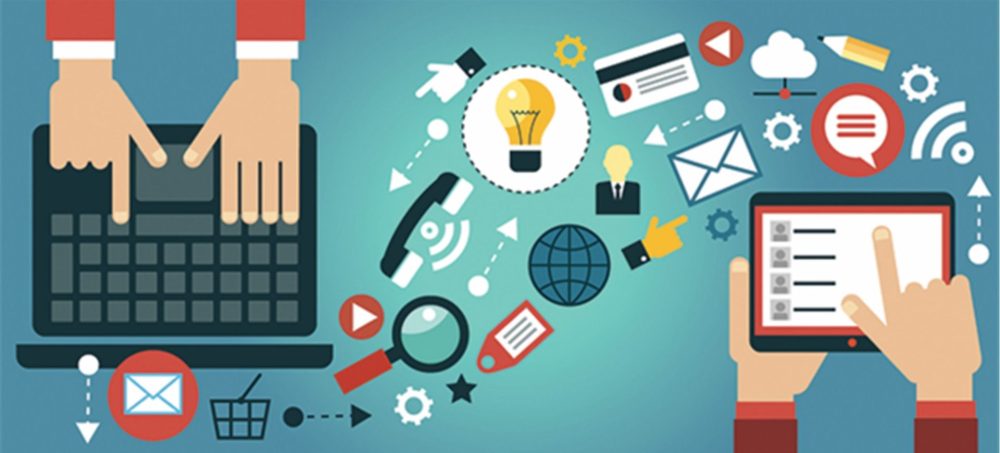With each new year, the digital scene rapidly sheds old decorations. But one “actor” consistently takes the stage, earning respect even from skeptics. Are email campaigns relevant in 2025? The answer lies not in rhetoric, but in numbers and action. In the midst of saturated attention, online emails continue to deliver consistent results and expand sales funnel boundaries.
Are Email Campaigns Relevant in 2025?
The paradox of 2025 is the return to proven channels. Against the backdrop of an excess of messengers, push notifications, and advertising inserts, email campaigns have strengthened their positions thanks to predictability, autonomy, and high engagement.

Campaign Monitor has recorded an average open rate of 21.5%, with CTR reaching 3.6% in specific niches—values unmatched by most paid digital marketing channels.
Online emails do not require subscriptions to third-party platforms and do not lose messages in algorithms.
Email Marketing in 2025: Not Just Emails, but Micro-ecosystems
Email has transformed into more than just a channel—it has become a platform for personalized digital experiences. Subscribers not only receive information but interact with it. Embedded AMP elements, AI segmentation, real-time behavioral analysis, and A/B testing have turned campaigns into dynamic, adaptive structures.
Email marketing builds personalized scenarios based on behavior, location, and previous actions. In practice, this means that every other subscriber receives a message tailored to them based on behavioral patterns.
Are email campaigns relevant in 2025? When emails can react to cursor movements and remember when the reader last opened the email—the answer is clear.
Effectiveness of Email Campaigns
The effectiveness of email campaigns still surpasses competitors in terms of cost/result ratio. The average ROI for email campaigns is $42 for every dollar spent. In times of shrinking marketing budgets, such emails remain the most profitable tools for attracting online customers.
Mailchimp notes that personalized emails increase open rates by 29% and click-through rates by 41%. These data emphasize that effectiveness depends not on the channel but on quality and strategy. Are email campaigns relevant in 2025? Definitely, if approached uniquely.
New Forms of Communication
Email has ceased to be a one-way dialogue. Communication is built on equality: subscribers choose what to read, when to receive emails, and which topics are important. In conditions of high loyalty, email provides not just a response but engagement.
Content is tailored based on behavior analysis: click frequency, depth of engagement, response time. This approach increases trust and allows for maintaining attention without pressure.
Are email campaigns relevant in 2025 when communication evolves into personalized conversations? Absolutely.
Why Email in 2025
An email-oriented strategy addresses multiple digital marketing tasks at once. Below are examples of key directions where the channel maintains leadership:
- Base segmentation—building behavioral scenarios based on clicks, reactions, purchases.
- Lead nurturing—turning cold leads into customers through series of sequences.
- Retention—loyalty programs, personalized offers, automatic reminders.
- Reactivation of inactives—win-back campaigns and reactivation mechanics.
- Content funnel—education, case stories, expert advice.
- Direct conversion—flash sales, limited offers, launching new products.
Are email campaigns relevant in 2025 when one tool covers the entire customer journey from introduction to purchase? The answer is clear.
Digital Infrastructure: The Role of Email in the Ecosystem
Email today is not an “add-on” to internet marketing but its backbone. Without a stable email strategy, the sales funnel loses strength, customer data fragments, and communication becomes random.
According to HubSpot, companies actively using email show a 44% higher conversion in repeat sales. These metrics are particularly important in B2B and complex B2C niches. Their role only intensifies when combined with other channels—from push notifications to social media.
To Learn or Not to Learn: A Question of Direction, Not Trend
The growth of the digital economy pushes towards mastering specialized directions, especially where tools yield measurable results. In this context, email marketing in 2025 is not just a set of technical tricks but a strategy with a high entry threshold.
Analytics, copywriting, UX, automation, behavioral modeling—all of this requires systematic knowledge. So, is it worth studying to become an internet marketer in 2025? The answer is dictated not by trends but by the market. Mastering the profession of an internet marketer and working remotely is the key to successful earnings. A specialist proficient in email tools remains in demand regardless of the industry.
Email Marketing Trends in 2025
Passive chains and universal templates have given way to adaptive architecture. Trends revolve around AI, hyper-segmentation, and behavioral automation.
Among the key directions:
- Integration of artificial intelligence for content creation and sending customization;
- Use of machine learning in subscriber behavior analysis;
- Multi-format emails with action capabilities within the message body;
- Automatic timing adjustment based on individual interaction history.
Within these trends, their capabilities expand faster than any other digital marketing channel.
Email as a Digital Interface
In the era of hybrid work and mass transition to online tasks, email serves as a “digital desktop.” It is a tool not only for business but also for internal communications, task management, confirmations, and data collection.
Thanks to its stability and high level of security, email maintains its status as a trusted channel. Compared to messengers and chats, it allows for more systematic communication—with both the team and the audience.
From Clicks to Loyalty: The Role of Email
Working with subscriber bases goes beyond just sending emails. It is a long-term strategy where each email becomes part of a loyalty reinforcement system. With the right architecture, email remains the most reliable link in maintaining contact with the customer.
HubSpot notes that companies applying personalized email strategies increase retention by 26% compared to those not using adaptive delivery. This includes adapting content based on past behavior, interests, language, and even purchase frequency.
Are email campaigns relevant in 2025 if they are the ones retaining customers in the sales funnel after completing a transaction? That’s exactly what happens.
Personalization and Data
Without analytics, segmentation, and flexible email settings, email ceases to be an effective tool. A platform without CRM integration and behavior tracking loses half of its potential returns. Personalization is no longer limited to using the recipient’s name.

Behavioral data comes into play: visit frequency, purchase history, response to previous emails. Email becomes a predictive tool, where each email is a step in a scenario.
Are Email Campaigns Relevant in 2025: Conclusions
Are email campaigns relevant in 2025? Not only are they relevant—they are critically essential in an environment where every click is measured, every subscriber matters, and communication must work seamlessly. Regardless of platforms, formats, and visual solutions, this channel provides consistency, control, and scalability.


